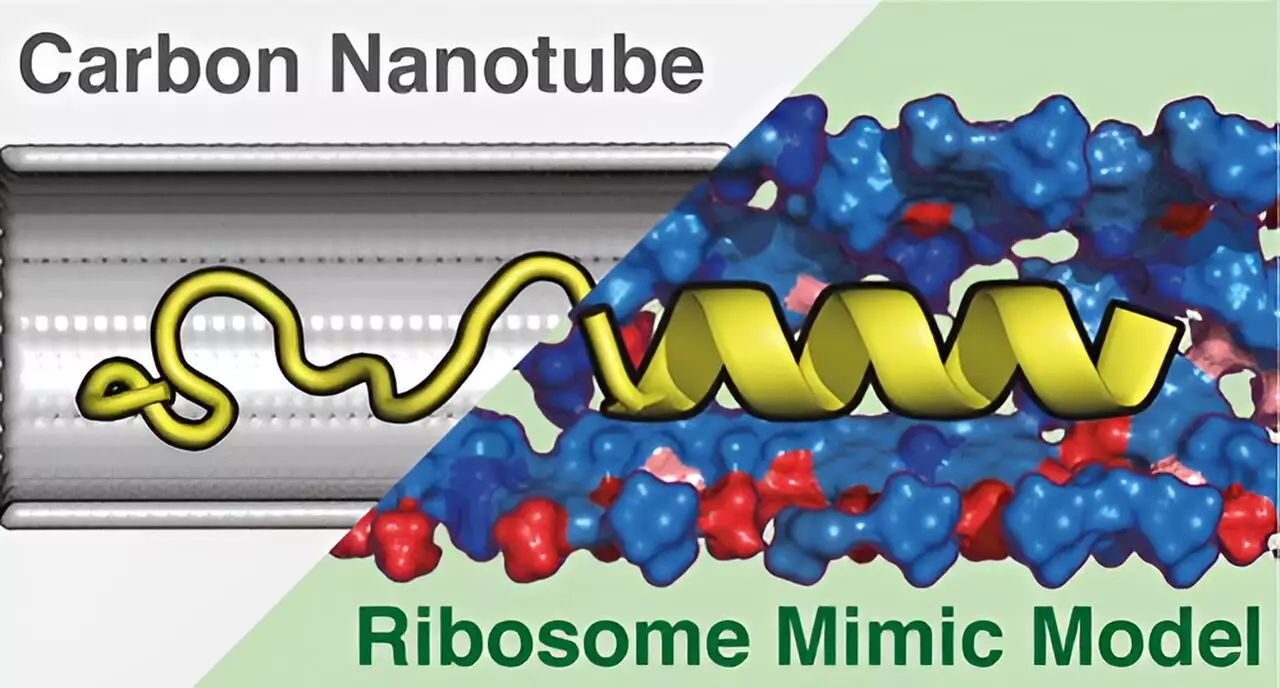Ribosomes are essential cellular structures, functioning as the machinery for protein synthesis. Situated within all living cells, ribosomes translate genetic information, producing proteins that perform various functionalities essential for life. However, the complex internal environment of ribosomes, particularly the ribosome tunnel through which nascent proteins emerge, has been a subject of intense study due to its critical role in determining protein structure. Recent advancements in computational modeling have provided deeper insight into this fundamental biological process, leading to breakthroughs in our understanding of protein synthesis.
A significant discovery made by researchers at the University of Tsukuba is the role of the ribosome tunnel’s chemical properties in protein conformation. It has been well-documented that proteins can begin their folding process even while still tethered to the ribosome. This phenomenon sparks curiosity about how the immediate biochemical environment influences the structure and function of proteins. The ribosome tunnel is not merely a passageway; it presents a unique microenvironment that affects how proteins fold, a process critical to their functionality.
To explore this intriguing phenomenon, the team constructed a sophisticated model known as the Ribosome Environment Mimicking Model (REMM). This model was designed to accurately replicate the inner diameter and the chemical composition of the ribosomal tunnel. The innovative approach contrasts with a traditional model based solely on carbon nanotubes (CNT), which neglects the significant chemical properties of the ribosome’s environment. The REMM offers a more precise representation, enabling detailed investigations into how proteins behave within this intricate setting.
The researchers employed molecular dynamics simulations to assess the behavior of various proteins within both the REMM and the CNT. This computational technique allows scientists to observe the dynamic interactions of proteins as they navigate through the ribosome tunnel. The results were compelling; the REMM consistently produced protein structures that closely matched experimentally observed data, illustrating its superiority over the conventional CNT model. This indicates that the chemical diversity within the REMM is vital in replicating the nuances of protein folding, providing a better comprehension of the molecular interactions at play.
The implications of this research transcend the mere understanding of protein synthesis. In refining the REMM, researchers anticipate that it will lead to deeper insights into the dynamic interplay of molecular structures during translation, ultimately enhancing our grasp of cellular processes. This could have far-reaching consequences in fields such as biotechnology and pharmaceuticals, where understanding protein structure is critical for drug design and development. As scientists continue to analyze the intricacies of ribosomal mechanisms, the goal remains clear: to unlock the myriad secrets of life encoded within proteins and their synthesis pathways.
The advancements in ribosome modeling represent a pivotal moment in molecular biology, edging us closer towards a comprehensive understanding of life at a cellular level. The intersections of chemistry, biology, and technology illustrate the vibrant scientific inquiry that continues to unravel the complexities of protein synthesis.


Leave a Reply